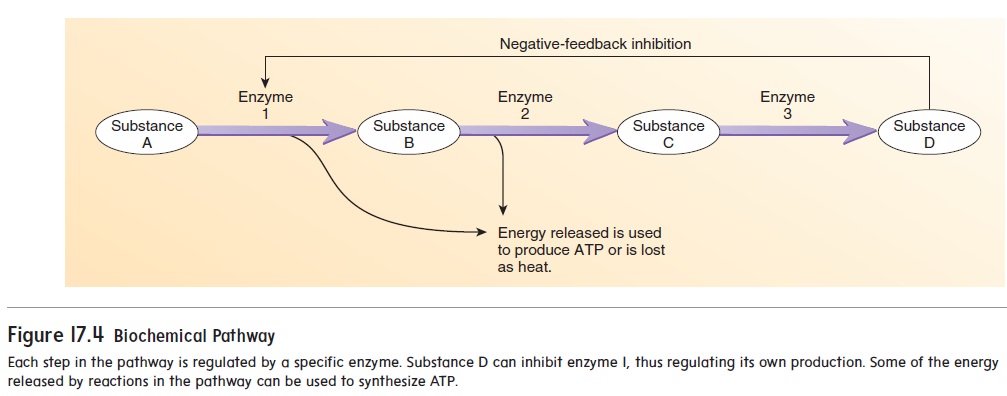Chapter: Essentials of Anatomy and Physiology: Nutrition, Metabolism, and body Temperature Regulation
Regulation of Metabolism
Regulation of Metabolism
The products of digestion, such as glucose, fatty acids, and amino acids, are molecules containing energy within their chemical bonds. A series of chemical reactions, called a biochemical pathway,controls the energy release from these molecules. At some of the steps, small amounts of energy are released; some of this energy is used to synthesize ATP (figure 17.4). About 40% of the energy in foods is incorporated into ATP; the rest is lost as heat.

There are several different biochemical pathways inside cells. Which pathways function and how much each pathway is used is determined by enzymes because each step in the pathway requires a specific enzyme . In turn, enzymes are regulated in several ways:
1. Enzyme synthesis. Enzymes are proteins, and their synthesisdepends on DNA . Thus, the types and amounts of enzymes present in cells are under genetic control.
2. Receptor-mediated enzyme activity. The combination of achemical signal, such as a neurotransmitter or hormone, with a membrane-bound or intracellular receptor can activate or inhibit enzyme activity .
3. Product control of enzyme activity. The end product of abiochemical pathway can inhibit the enzyme responsible for the first reaction in the pathway. This negative-feedback regulation prevents accumulation of the intermediate products and the end product of the pathway (figure 17.4).
Related Topics